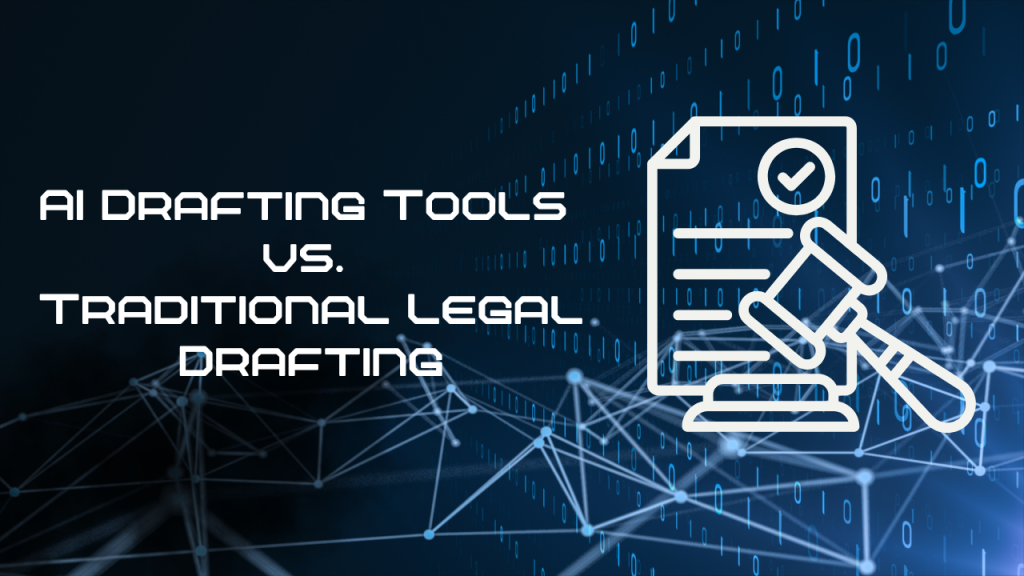There is a major change in the legal industry. In the era of technology and artificial intelligence (AI), a large number of tasks carried out previously in the legal sphere are manually performed and are now undergoing automation. One of these changes is in legal drafting, where AI is entering in a big way. However, what are the differences with these AI-based software and conventional legal drafting processes? Which one brings better outcomes? Let’s look at both sides and see.
What is Traditional Legal Drafting?
Traditional legal drafting involves the lawyers and other legal professionals preparing legal documents by hand. Contract, Agreement, Legal Notice, Court Document are some of these documents. The procedure requires
- Meticulous research
- Precise language usage
- Deep understanding of laws and regulations
Attorneys take a lot of time writing each clause to ensure that it is right and compliant with the laws. Although this approach has a personal feel and the possibility of a creative argument, it is also accompanied by a number of problems.
- Time-consuming: Creating one detailed document can take several days.
- Human error: Small mistakes in wording or meaning can lead to big problems.
- High costs: Manual drafting often means higher billing for clients.
Although these limitations exist; traditional legal drafting is still highly regarded because it is personalized, and empathetic, with a reason, which AI can’t simulate brittlely.
How Does AI Legal Drafting Work?
The highest level of AI drafting, machine learning (ML), natural language processing (NLP), and deep learning algorithms break down large volumes of legal data to create the drafts. They notice patterns and follow the rules and create documents using the previously established templates and the language of the law.
Benefits of AI Drafting Tools
- Speed: AI can write the contract or agreement in minutes.
- Cost-efficiency: Eliminates the heavy usage of legal teams thus saving on overhead expenses.
- Accuracy: No possibility of human error because it makes use of legal database cross reference.
- Time-saving: Lawyers will not have to repeat the tasks as they can focus on business strategy and interaction with client
As an example, contract automation software and AI-driven brief generators can assist law firms in doing all the routine documentation with hardly any effort.
Key Differences: AI vs. Traditional Drafting
| Feature | AI Legal Drafting | Traditional Legal Drafting |
| Speed | Extremely fast – drafts in minutes | Slower – requires days or weeks |
| Accuracy | High, but depends on training data | High, based on expertise |
| Creativity | Limited to templates & patterns | High – allows innovative arguments |
| Cost | Lower long-term costs | Higher due to manpower |
| Human Touch | Absent | Strong – empathy and client focus |
Which is More Efficient?
In terms of efficiency, AI wins hands down. Imagine needing 50 NDAs drafted in one day—AI can handle it effortlessly, while traditional methods would require multiple lawyers working overtime.
Nevertheless, efficiency is not the only thing. Legal problems that involve complicated matters usually demand a tactical approach as well as bargaining and convincing writing, yet human lawyers perform better in this regard.
Accuracy and Compliance
Accuracy is the goal pursued by both AI and humans; however, the methods of achieving this goal are different:
- AI: Relies on algorithms and databases. Can quickly update based on new case laws but may lack contextual judgment.
- Traditional: Relies on legal expertise and reasoning. Errors are possible due to oversight but judgment is superior in complex cases.
Ethical Concerns with AI Drafting
AI drafting tools are not without challenges:
- Bias: If the AI is trained on biased data, it can replicate those biases.
- Accountability: Who is to blame if an incorrect contract is produced by an AI-designed contract— the lawyer, the software?
- Transparency: Many AI systems are black boxes making it hard to understand their decision-making process.
The law firms will have to conduct trade-offs between automation and control, where the AI tools should be legal and ethically compliant.
When to Use AI vs. Traditional Drafting?
Best for AI:
- Standardized documents (NDAs, employment contracts, leases)
- High-volume tasks
- Fast turnaround needs
Best for Traditional:
- Complex litigation documents
- Negotiated contracts
- Sensitive legal matters requiring judgment and creativity
Cost-Benefit Analysis
AI may need an outlay at the start in terms of software but the returns become substantial in the long run. Law firms cut down on the number of staff members, decrease turnaround period and enhance output. Conventional approaches, being more expensive, are irreplaceable when it comes to issues in which human intellect and persuasion are paramount.
Future of Legal Drafting: A Hybrid Approach
The real winner? A combination of AI and human expertise.
- AI handles routine drafting, error-checking, and compliance review,
- Lawyers focus on analysis, negotiation, and client relationships.
It is a hybrid model, which will provide speed, accuracy, and a personalized service- the best of both worlds.
Conclusion
Artificial intelligent-based tools on law drafting are disrupting the law business with accompanying benefits of speed, cost reductions and effectiveness. However, conventional drafting is still relevant to tricky, subtle, and even life-altering legal practice. The future is not about making one or the other a success, it is about a combination of both to make the legal services smarter and more effective.










